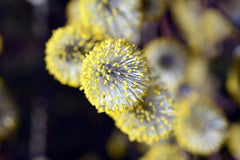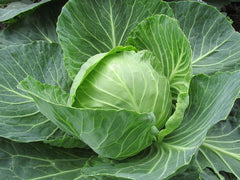
You have noticed that your dog suffers from allergies, and you are confused about what could be the source.
Maybe you already took your pup to the vet and have ruled out food allergies and common skin infections and parasites. What's next?
There are various natural and chemical allergens, irritants, and pollutants commonly found in houses. The list is pretty long, but it is also quite complete, which means it can help you get rid of what is triggering your dog's allergies.
Please keep in mind that you are most likely also helping yourself and anyone else also living with you while doing so. Some of the substances listed below are highly toxic and irritating and may cause harm to children and adults alike.
For the list of 45 home allergens and toxic irritants without the explanation, scroll to the end of the article.
The two-step process for dealing with dog allergies
Whenever dealing with dog allergies, it is always a two-step process:
- Try to remove as much as possible the allergens, whether it be changing your dog's diet or wiping his belly after he goes outside.
- Strengthen your dog's immune system and gut. You may use our Petsmont Wild Alaskan Salmon Oil Formula as it is rich in Omega 3s and supports both the immune system and gut. I also wrote a great article on the various ways to restore your dog's gut health.
Dog owners often find this surprising but sometimes, only doing one of the two steps is enough to relieve your dog's allergies. Unfortunately, in more severe cases, it won't be enough.
Natural irritants and allergens that may trigger your dog's allergies

The list of natural irritants and allergens is short, yet these are pretty annoying for your dog as they are invisible, and you may have little control over them, like pollen.
The best remedy against these irritants and allergens is to thoroughly and regularly clean all surfaces and material your dog comes in contact with inside your home.
- Dust mites
- Indoor plants
- Mulch/Cedar chips
- Rugs
- Carpets
- Cockroaches
- Mold
- Pollen
When it comes to flooring, consider removing carpeting and instead use hardwood or linoleum flooring and washable area rugs. If this isn't an option for you, vacuum at least once a week with a vacuum cleaner equipped with a high-efficiency particulate air (HEPA) filter. Shampoo wall-to-wall carpets periodically.
Plants' dirt may have mold, so you should remove them from the living areas or spread aquarium gravel over the dirt to contain the mold.

Encase pillows, mattresses, and box springs in dust-mite-proof covers. Wash sheets, pillowcases, and blankets at least once a week in water heated to at least 130 F (54 C). Remove and wash comforters. Replace wool or feather bedding with synthetic materials.
Hot and humid houses are breeding grounds for dust mites and mold. Maintain the temperature between 68 F (20 C) and 72 F (22 C) and keep relative humidity no higher than 50 percent. Clean or replace air filters at least once a month.
Chemical, artificial, toxic irritants and allergens that may trigger your dog's allergies

This list is much longer. Also, these substances may be harmful to you and your dog's health on top of triggering allergies.
The general advice here is to:
- Avoid at all costs, if possible. Look for natural alternatives. Research ingredients even if they have a complicated name.
- If not possible to stop using, then protect your skin with gloves when appropriate, always increase ventilation by opening windows and turning on a fan, and keep everyone else away until fumes have dissipated.
I have organized this list by category or room within a house they are usually found in.
- Smoke, cigarettes: smoking is toxic as a cigarette contains a massive list of pollutants, and so does its smoke.
- Garage:
- Antifreeze, motor oil, latex paint, oil-based paint, batteries, windshield washer fluid
- Advice: don't use them if possible, or make sure not to breathe any fumes. If you can't avoid it, increase ventilation as much as possible and limit your exposure.
- Laundry, utility room:
- Laundry detergents, all-purpose cleaners, bleach, pet flea and tick treatments, insecticides, floor waxes
- Advice: don't use them if possible. Don't use chemical flea and tick treatments like flea collars. When it comes to detergents and cleaners, look for organic alternatives. Wear protective gloves and increase ventilation if you have to use them.
- Kitchen:
- Soaps, dishwashing detergents, oven cleaners, antibacterial cleaner, window and glass cleaner, bait traps for ants, cockroaches, crickets, and other insects
- Advice: look for organic and natural alternatives to these chemical-based products. Oven cleaners are particularly toxic and should be avoided at all costs.
- Bathroom:
- Toilet bowl cleaners, mold and mildew removers, and drain cleaners.
- Advice: don't mix various types of cleaners, avoid using them if possible and if not, wear protective gloves and goggles.
- Living room:
- Rug, carpet, upholstery cleaners, furniture polish, air fresheners, household foggers, litter deodorizers
- Advice: don't use rugs, carpets, and upholstery furniture, so you can avoid using these cleaners in the first place. Same for the other products. If you can't avoid having rugs, carpets, and upholstery furniture, look for organic and natural cleaners that are non-toxic.
- Bedroom: Mothballs. They contain pesticides, and their fumes are toxic.
- Backyard, pool, and garden shed:
- Swimming pool chloride tablets, algicides for the pool, insect repellents, weed killers, baits for rodent control, herbicides, fertilizers
- Advice: limit their use or make sure that neither humans nor pets come in contact with them. Using chemical products in your yard may be harmful to your dog.
Additional tips to help your dog
Please be careful with all the objects that your dog may put in his mouth:
- toys, tennis balls, branches: these objects may have been treated with harmful substances
- any material, fabric, or surface inside or outside your home that may have been treated or cleaned with harmful substances
Cars often accumulate dust faster than a house and contain many allergens. Regular vacuuming of your car may help eliminate most of these allergens.
The list of 45 home allergens and irritants
- Dust mites
- Indoor plants
- Mulch/Cedar chips
- Rugs
- Carpets
- Cockroaches
- Mold
- Pollen
- Smoke
- Cigarettes
- Antifreeze
- Motor oil
- Latex paint
- Oil-based paint
- Batteries
- Windshield washer fluid
- Laundry detergents
- All-purpose cleaners
- Bleach
- Pet flea and tick treatments
- Insecticides
- Floor waxes
- Soaps
- Dishwashing detergents
- Oven cleaners
- Antibacterial cleaner
- Window and glass cleaner
- Bait traps for ants, cockroaches, crickets
- Toilet bowl cleaners
- Mold and mildew removers
- Drain cleaners
- Rug, carpet, upholstery cleaners
- Furniture polish
- Air fresheners
- Household foggers
- Litter deodorizers
- Mothballs
- Swimming pool chloride tablets
- Algicides for the pool
- Insect repellents
- Weed killers
- Baits for rodent control
- Herbicides
- Fertilizers
- Toys




